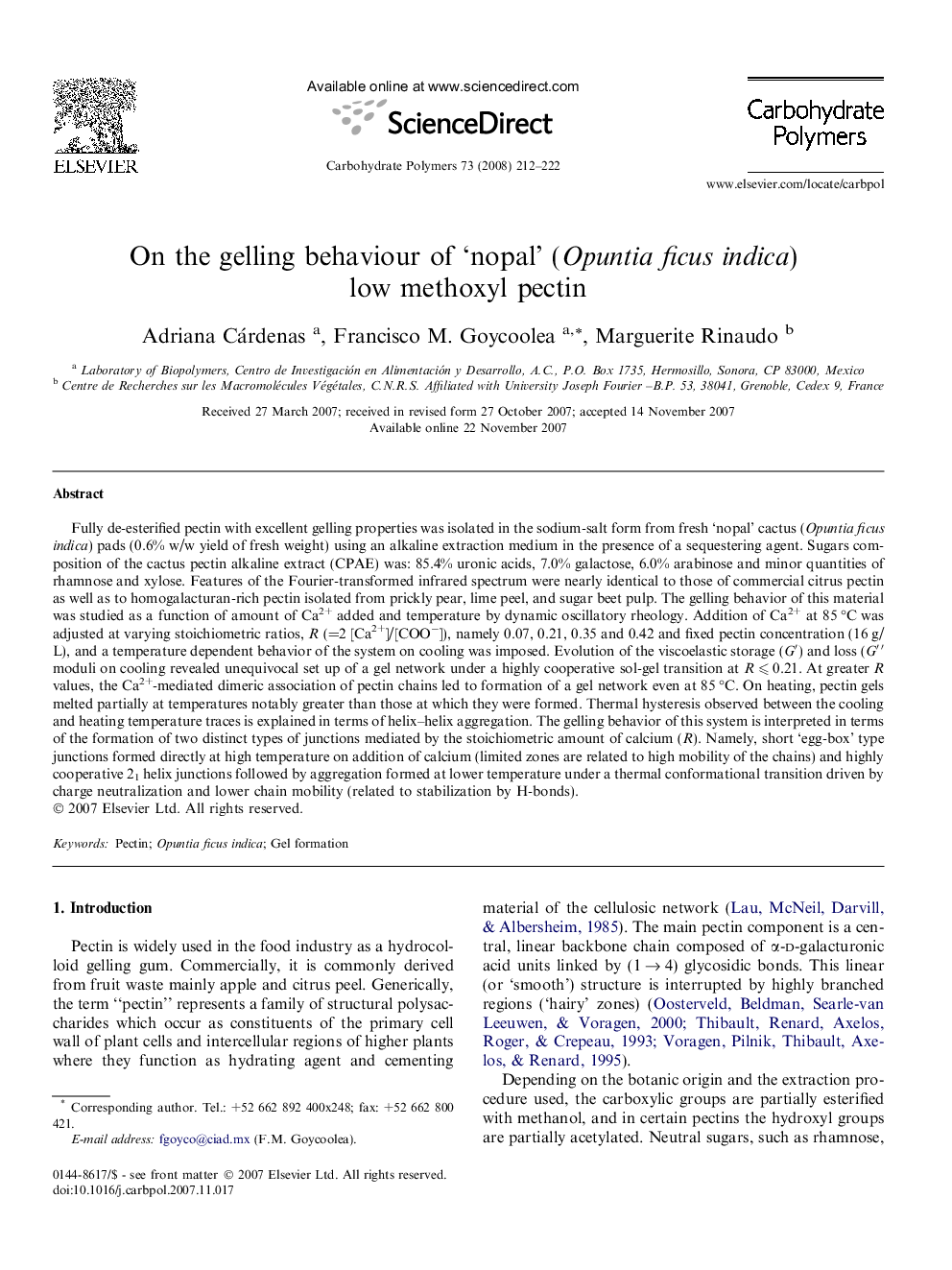| کد مقاله | کد نشریه | سال انتشار | مقاله انگلیسی | نسخه تمام متن |
|---|---|---|---|---|
| 1384900 | 982423 | 2008 | 11 صفحه PDF | دانلود رایگان |

Fully de-esterified pectin with excellent gelling properties was isolated in the sodium-salt form from fresh ‘nopal’ cactus (Opuntia ficus indica) pads (0.6% w/w yield of fresh weight) using an alkaline extraction medium in the presence of a sequestering agent. Sugars composition of the cactus pectin alkaline extract (CPAE) was: 85.4% uronic acids, 7.0% galactose, 6.0% arabinose and minor quantities of rhamnose and xylose. Features of the Fourier-transformed infrared spectrum were nearly identical to those of commercial citrus pectin as well as to homogalacturan-rich pectin isolated from prickly pear, lime peel, and sugar beet pulp. The gelling behavior of this material was studied as a function of amount of Ca2+ added and temperature by dynamic oscillatory rheology. Addition of Ca2+ at 85 °C was adjusted at varying stoichiometric ratios, R (=2 [Ca2+]/[COO−]), namely 0.07, 0.21, 0.35 and 0.42 and fixed pectin concentration (16 g/L), and a temperature dependent behavior of the system on cooling was imposed. Evolution of the viscoelastic storage (G′) and loss (G′′ moduli on cooling revealed unequivocal set up of a gel network under a highly cooperative sol-gel transition at R ⩽ 0.21. At greater R values, the Ca2+-mediated dimeric association of pectin chains led to formation of a gel network even at 85 °C. On heating, pectin gels melted partially at temperatures notably greater than those at which they were formed. Thermal hysteresis observed between the cooling and heating temperature traces is explained in terms of helix–helix aggregation. The gelling behavior of this system is interpreted in terms of the formation of two distinct types of junctions mediated by the stoichiometric amount of calcium (R). Namely, short ‘egg-box’ type junctions formed directly at high temperature on addition of calcium (limited zones are related to high mobility of the chains) and highly cooperative 21 helix junctions followed by aggregation formed at lower temperature under a thermal conformational transition driven by charge neutralization and lower chain mobility (related to stabilization by H-bonds).
Journal: Carbohydrate Polymers - Volume 73, Issue 2, 19 July 2008, Pages 212–222